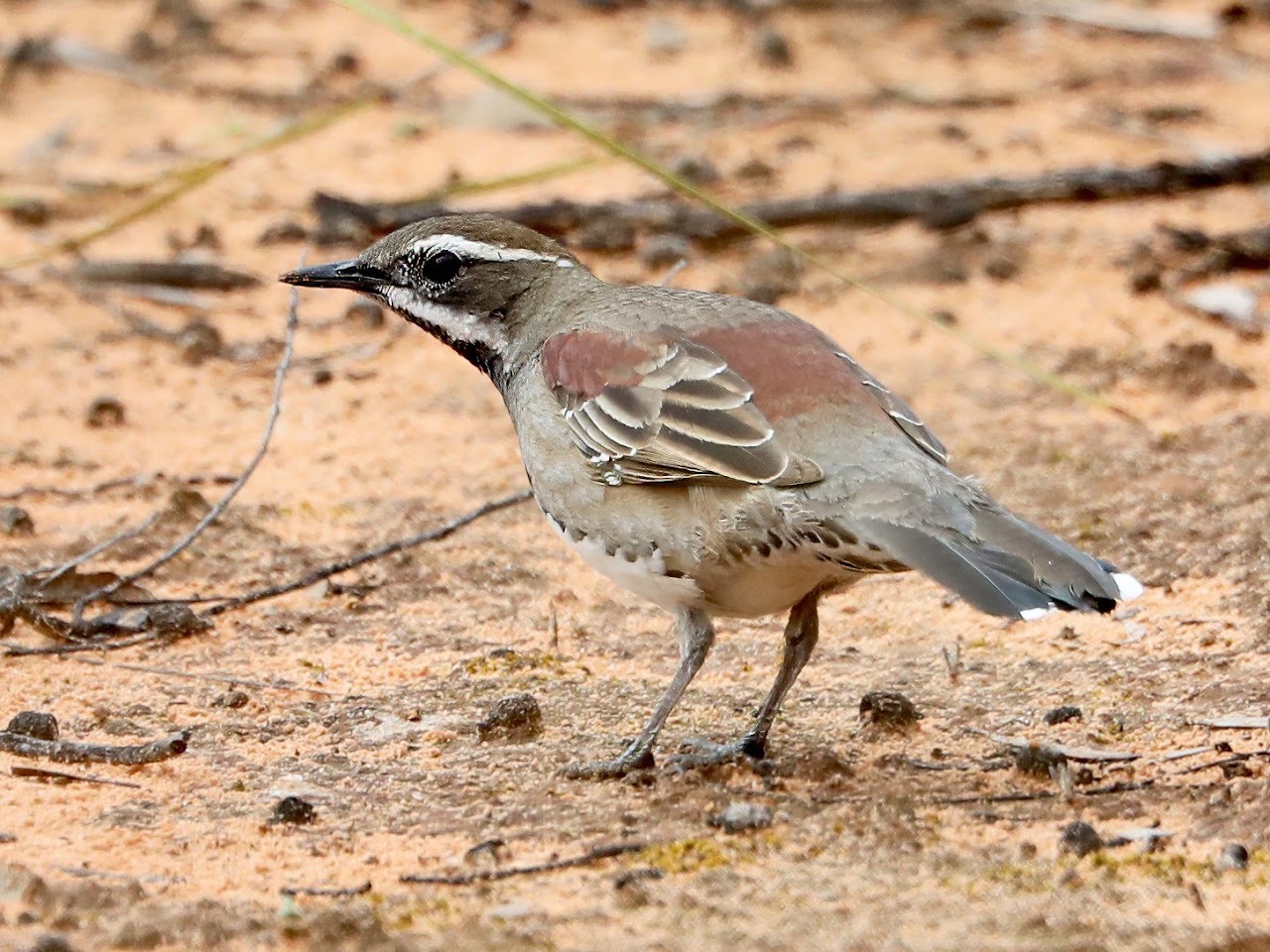All species of Quail-Thrush (1) are ground dwelling and share similar behaviour and general habitat preferences. They can be sedentary and nomadic and are usually uncommon so finding Quail-Thrush is mostly unexpected and always a delight. With longish legs and short wings they tend to walk away from perceived danger though they will flush and fly short distances with a characteristic whirring wing sound – their wings are not able to sustain prolonged long distance flight.
We recently found Chestnut Quail-Thrush in a few locations in Hattah-Kulkyne National Park south east of Mildura. As for all Q-T’s the Chestnut are a challenge to photograph as they move about on the ground in dense vegetation.
Please click on photos to enlarge.
Note the very short wings in the photo above – these wings are not for long range flights.
The chestnut band across the lower back shows this bird to be a male. Note the red eye in this and the next photo.
(1) The number of species of Quail-Thrush has changed in recent years. My old Morcombe guide shows four species however my most recent guide shows seven – see the Australian Bird Guide for the most recent/up to date species and their range/distribution maps. The subject of this post, the Chestnut Q-T, has been split into Chestnut Q-T (Cinclosoma castanotum) and the Copper-backed Q-T (Cinclosoma clarum). No doubt quite a few birders have picked up armchair ticks for some of the Q-T’s thanks to the work of taxonomists.




No comments:
Post a Comment